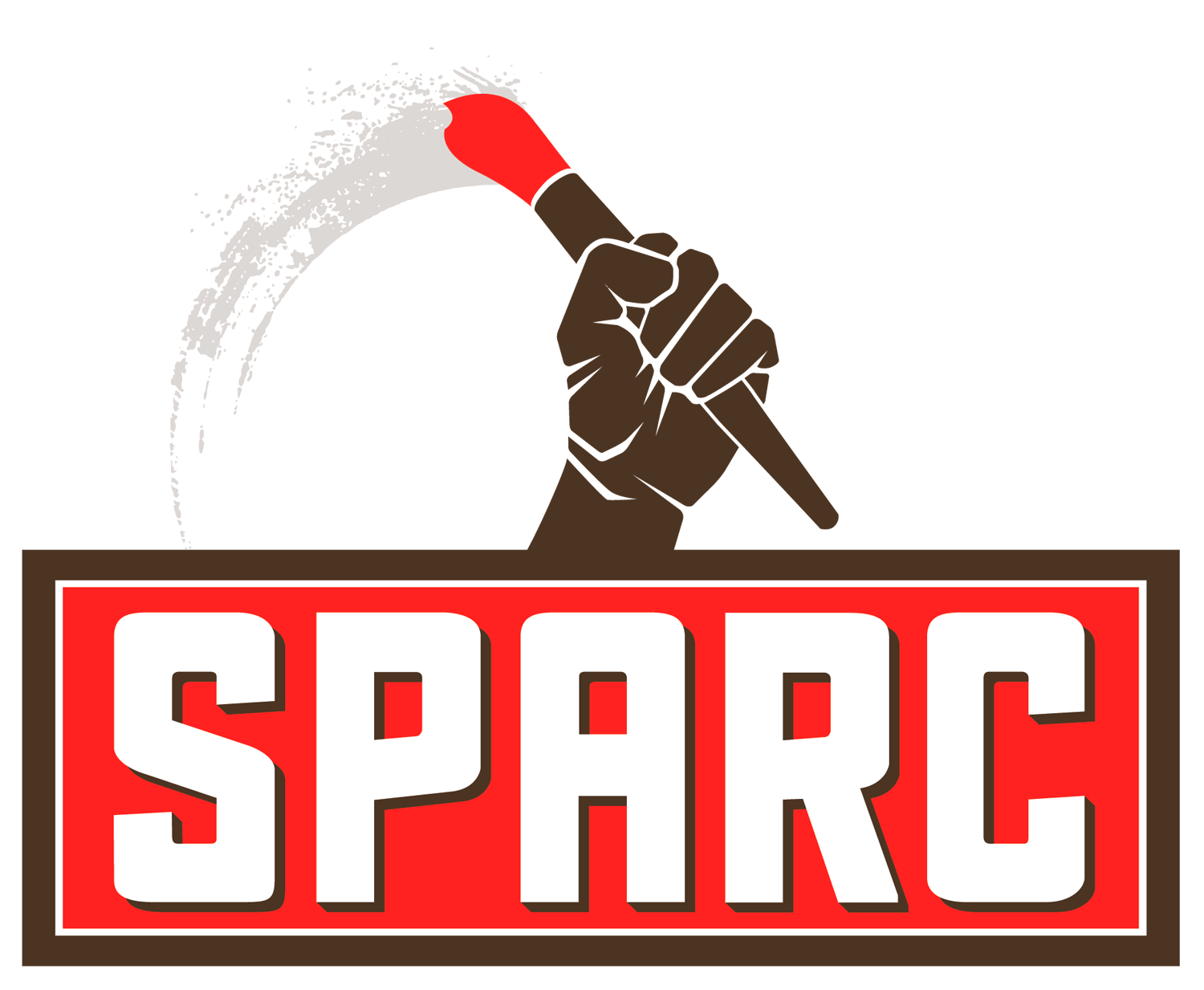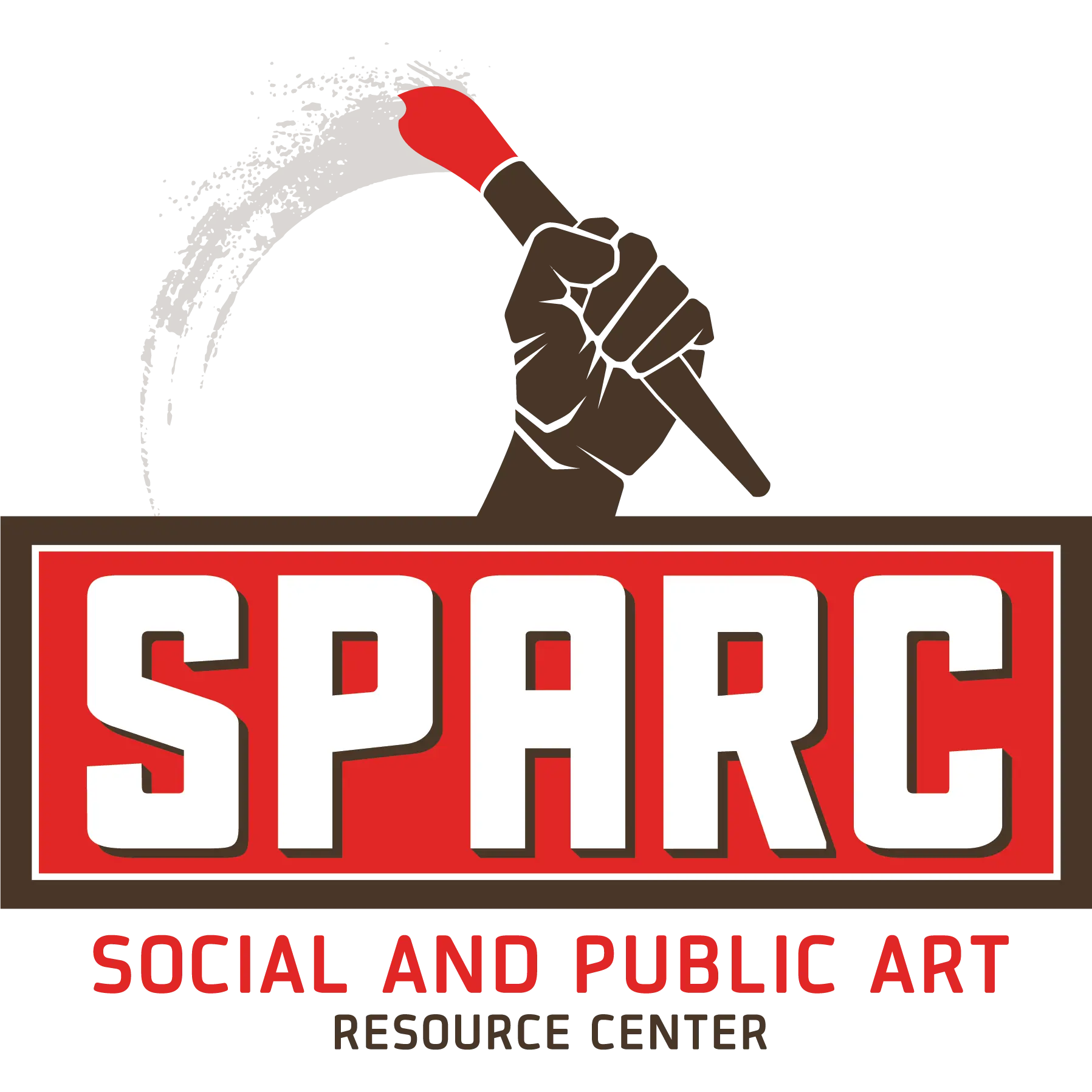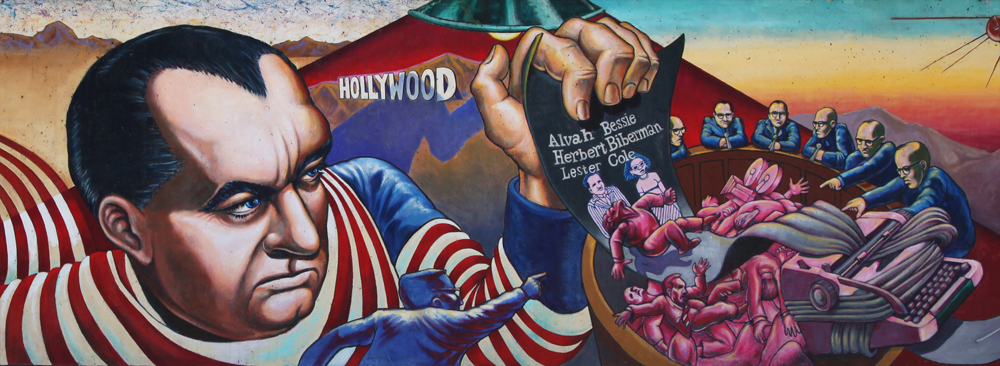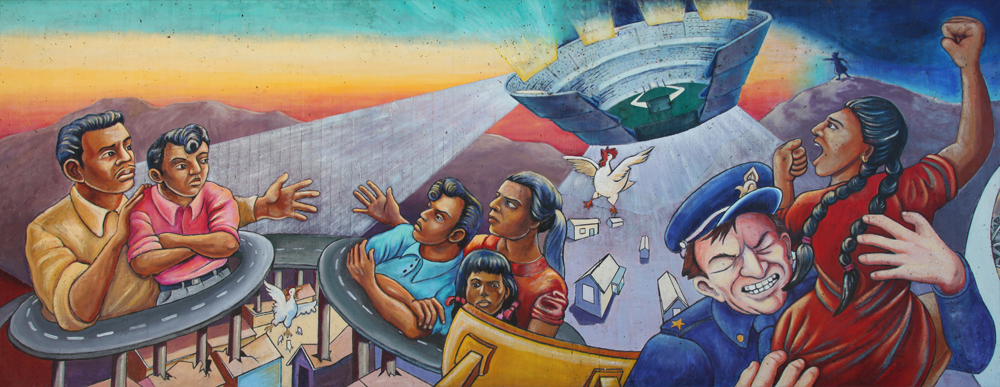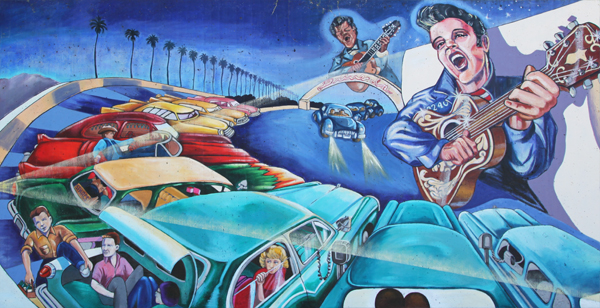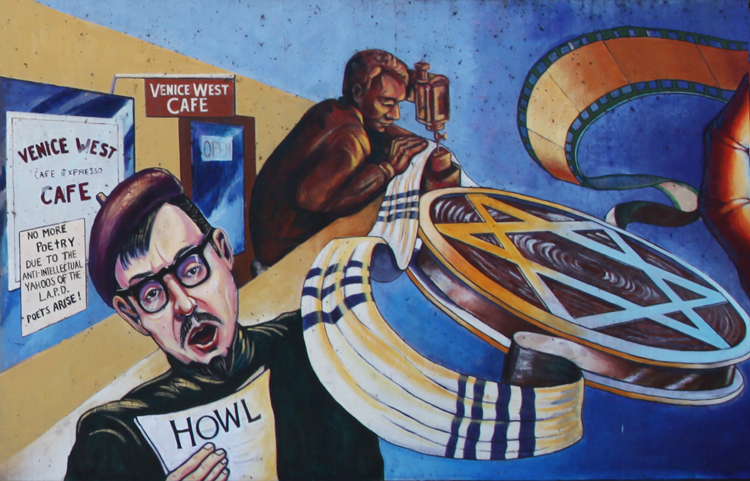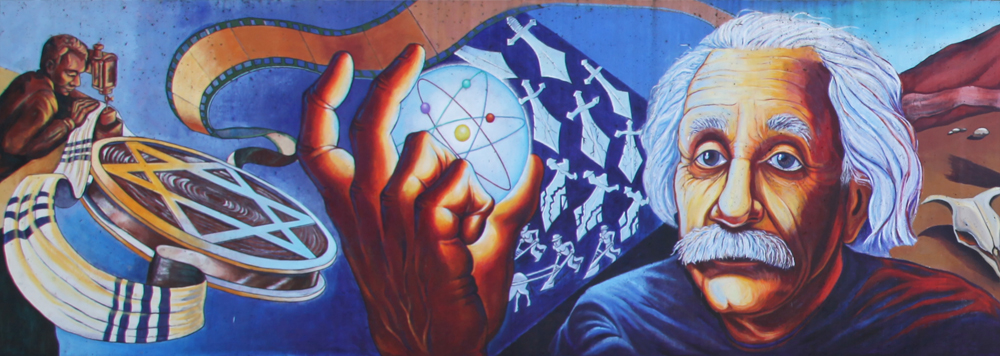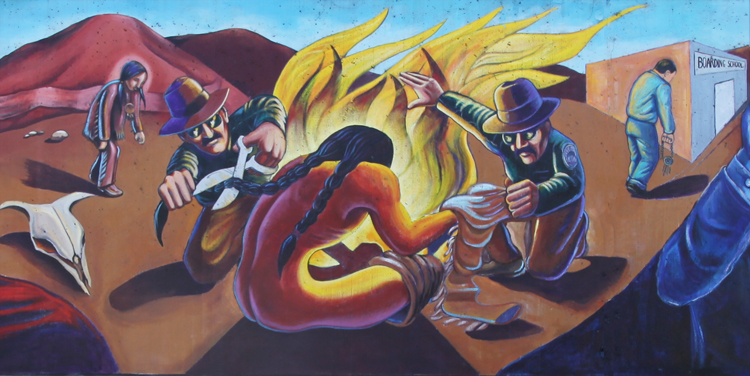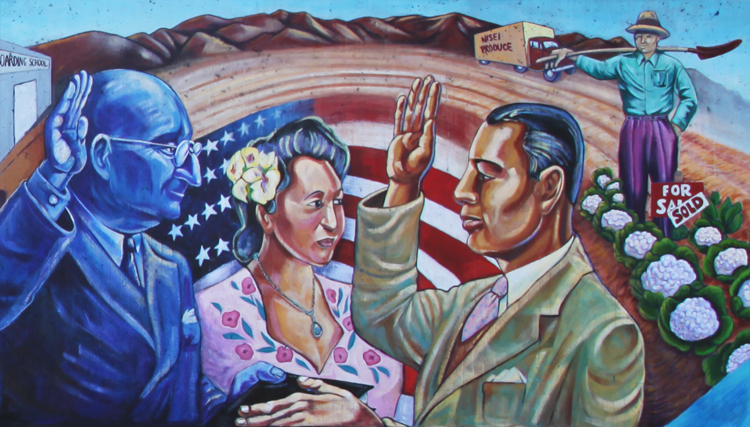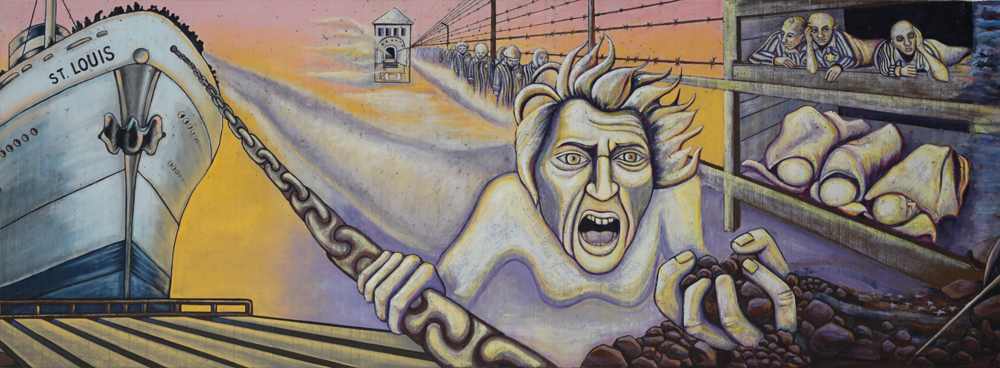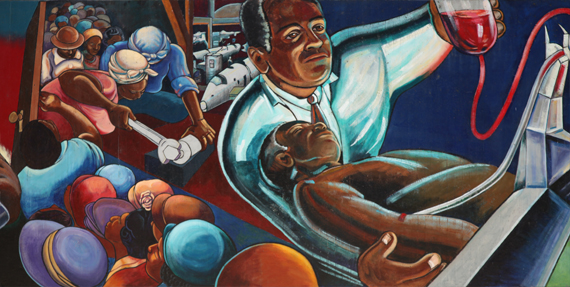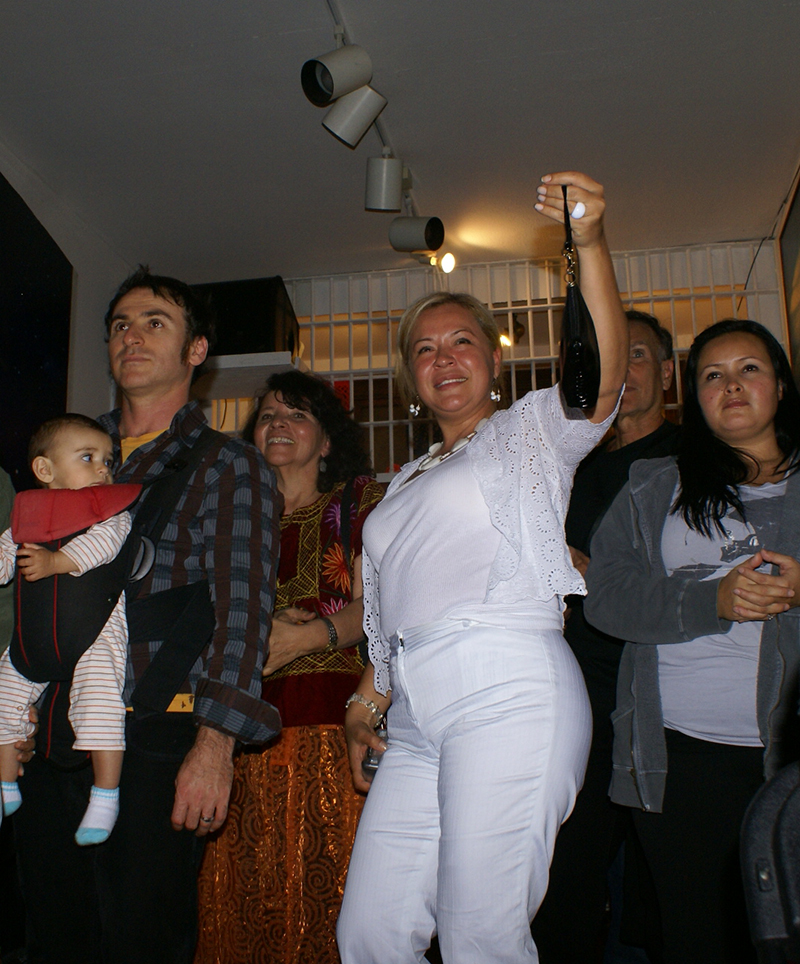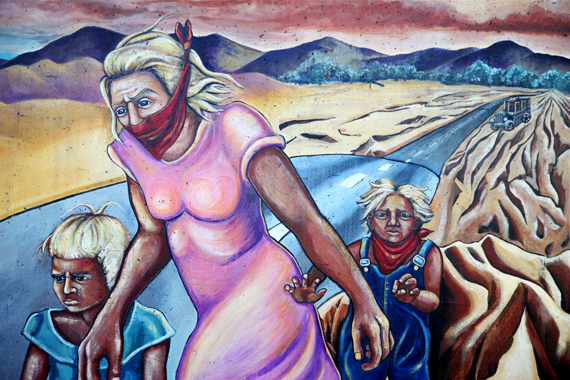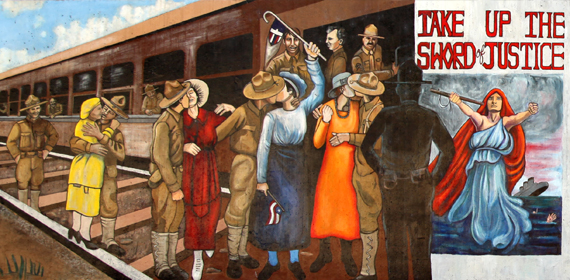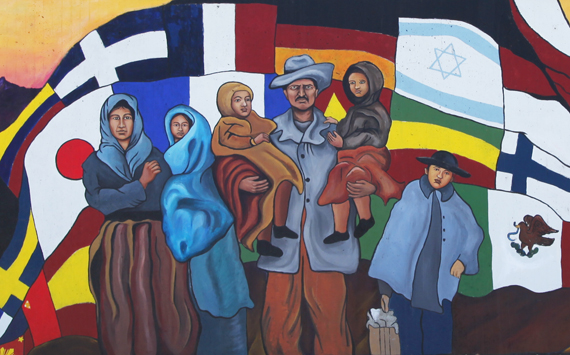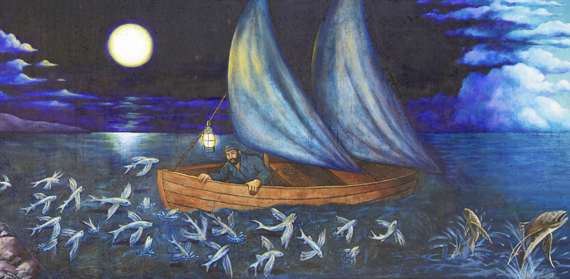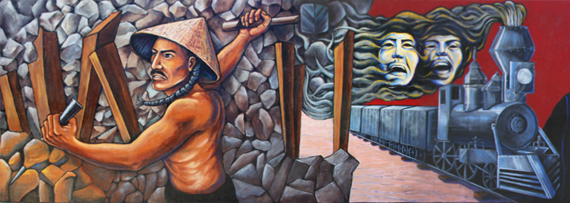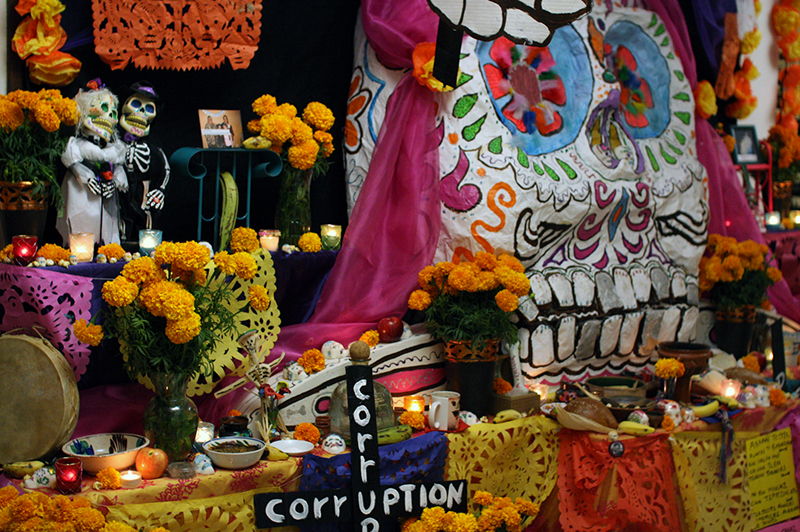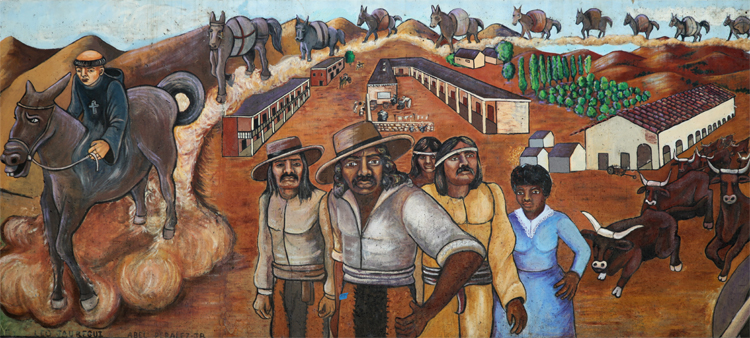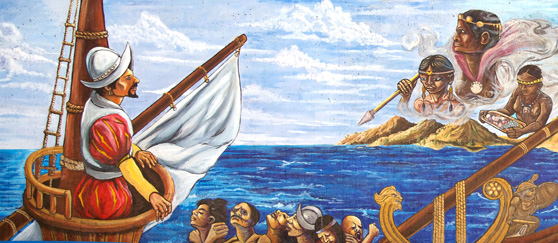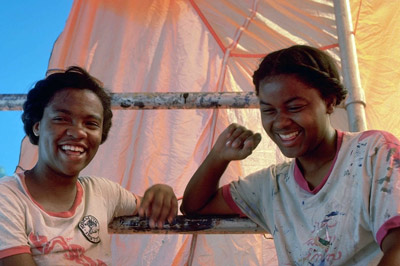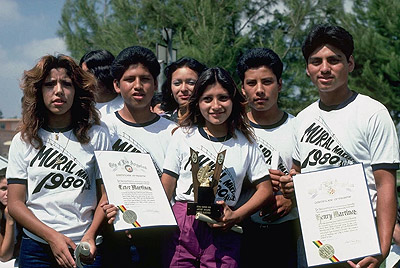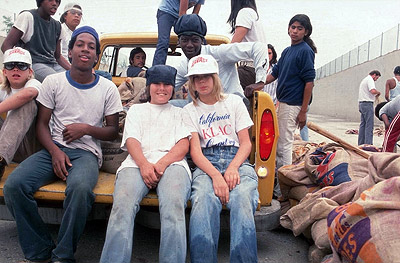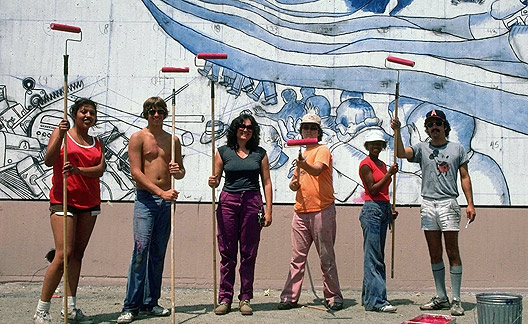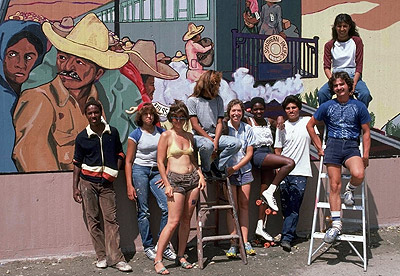The Great Wall of Los Angeles
The Great Wall of Los Angeles is one of Los Angeles’ true cultural landmarks and one of the country’s most respected and largest monuments to inter-racial harmony. SPARC’s first public art project and its true signature piece, the Great Wall is a landmark pictorial representation of the history of ethnic peoples of California from prehistoric times to the 1950’s, conceived by SPARC’S artistic director and founder Judith F. Baca. Begun in 1974 and completed over five summers, the Great Wall employed over 400 youth and their families from diverse social and economic backgrounds working with artists, oral historians, ethnologists, scholars, and hundreds of community members.
Its half-mile length (2,754 ft) in the Tujunga Flood Control Channel of the San Fernando Valley with accompanying park and bike trail hosts thousands of visitors every year, providing a vibrant and lasting tribute to the working people of California who have truly shaped its history. In 2000 and 2001 SPARC received acknowledgement and support from the distinguished Ford Foundation Animating Democracy: The Role of Civic Dialogue in the Arts initiative and from the Rockefeller Foundation Partnerships Affirming Community Transformation initiative. As well a $90,000 grant from the National Endowment for the Arts, in 2013, to continue work on the Great Wall; to hold civic dialogue sessions and ultimately design the remaining four decades of the century (1960s-1990s).
The mural’s restoration, a critical need, and continuation with future panels produced by the next generation of children of the Great wall remains a vital on going program of SPARC. We are currently initiating a major fundraising campaign to restore, extend and create a full use park at the Great Wall thereby establishing the site as an international educational and cultural destination.
Restoration
“The restoration of the Great Wall of Los Angeles is a massive undertaking. Every segment of the 2,750ft is cleaned, examined and treated to bring it back to its original state of brilliant color. Within the three-month dry season in the Los Angeles River the work must be completed racing against a clock that is determined by the difficult conditions of heat, water flow, rain and other factors of the unique site in the Los Angeles flood control channel. The site channels the main water flow through the San Fernando Valley to the ocean and becomes extremely perilous in a rain storm so weather watches and evacuation methods are a constant worry for the 30 members of the restoration team composed of professional muralist, interns from universities around the country, local volunteers and past participants of the Great Wall productions.”
– Message from UCLA Professor Judy Baca, Creator of the Great Wall of Los Angeles and SPARC’s Founder/Artistic Director
Virtual tour and more information available on the Great Wall Institute Website:
A Personal Message from Judy Baca
“In 1975 when the Great Wall was still a dream, I never imagined it would lead me, the more than 400 young “Mural Makers” and the 35 other artists on my team through such a moving set of experiences. Nor could I have imagined that 27years from the date the first paint was applied to the wall that it would still be a work in progress.
When I first saw the wall, I envisioned a long narrative of another history of California; one which included ethnic peoples, women and minorities who were so invisible in conventional text book accounts. The discovery of the history of California’s multi‑cultured peoples was a revelation to me as well as to the members of my teams. We learned each new decade of history in summer installments; the 20′s in 1978, the 30′s in 1980, the 40′s in 1981, and the 50′s in 1983. Each year our visions expanded as the images traveled down the wall. While our sense of our individual families’ places in history took form, we became family to one another. Working toward the achievement of a difficult common goal shifted our understandings of each other and most importantly of ourselves.
I designed this project as an artist concerned not only with the physical aesthetic considerations of a space, but the social, environmental and cultural issues affecting the site as well. I am not a social worker, though people mistakenly call me one and I am not a teacher although I have teaching skills. I draw on skills not normally used by artists. I’ve learned as much as I’ve taught from the youth I’ve had the good fortune to know by working alongside of them. They’ve taught me among other things how to laugh at myself, how to put play into hard work, and how not to be afraid to believe in something. I am extremely grateful.
Perhaps most overwhelming to me about the Great Wall experience has been learning of the courage of individuals in history who endured, spoke out, and overcame seemingly insurmountable obstacles. It was true both of the people we painted about and of ourselves the Mural Makers.”
– Judith F. Baca
Videos
Donna Deitch
Selected Testimonials
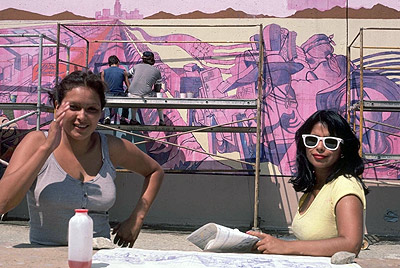
On the last day of the 1983 summer project, each of the Mural Makers sat down to write about his/her experiences of working on the mural. The following are excerpts from their thoughts.
Testimonials featured on KCET, click here.
Selected Public Reviews
To see more reviews on YELP
Green Bridge Proposal
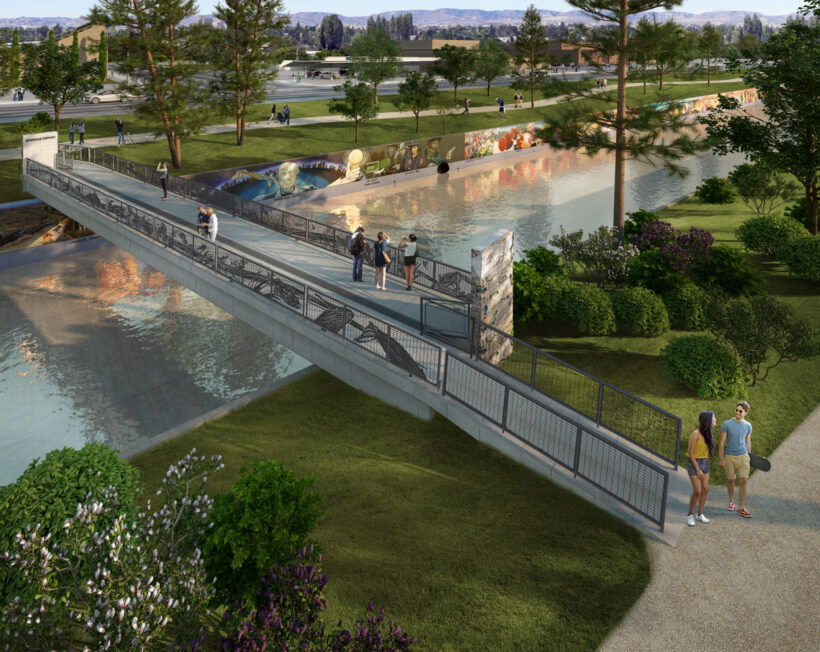
Begun in 1976 and completed over five summers, the Great Wall employed over 400 youth and their families from diverse, social and economic backgrounds working with artists, oral historians, ethnologists, scholars, and hundreds of community members. “The Great Wall” is painted on the concrete retaining wall of the Tujunga Wash in the San Fernando Valley. In addition to restoring the mural between 2009-2011, SPARC will also be constructing a new solar-lit “green” bridge with interpretive stations, and constructing five additional stations along the wall to provide access to the historical content of the mural.
Judy Baca and SPARC have collaborated with wHY Architecture to complete the designs for the “Green Bridge” which will be solar lit and composed in part from the debris of the Los Angeles River with interpretive panels along the expanse of the Bridge from which the public can view the River and the ½ mile of mural along its banks. A site plan, elevations for the bridge, materials, budget, schedule of construction have been completed for the bridge. A full model of the bridge has been built reviewed by County and City department representatives. The new Great Wall Interpretive “Green” Bridge will replace the former bridge which crossed the Tujunga Wash Flood control Channel between Miranda Street and Hatteras Street on the west side of Coldwater Canyon Blvd. The new bridge will function not only as a point to cross the Tujunga wash but also as a viewing station and interpretive center to view the Great Wall of Los Angeles mural and the Los Angeles River.
The structure of the bridge will consist of prefabricated built-up plate steel girders, steel framing and new poured concrete footings. The finishing material will consist of prefabricated textured fiberglass concrete panels on the sides of the footbridge and canopy, and composite plastic impregnated wood decking on walk able surfaces. End panels will be troweled stone face plaster over steel framing with guardrails constructed of powder-coated steel for durability. The look will be one of layered sediment with broken glass, and other plastic debris common to the river. The roof of the canopy will consist of aluminum framed, clear glass panels with thin film photovoltaic strips. Photovoltaic cells will collect solar energy and distribute back to the department of water and power, monitored by PV meters. On the underside of the canopy will be a clear skylight finished with two layers of laminated polycarbonate panels with images of the River and the Great Wall silk screened on film and sandwiched between them. Light will filter through this skylight during the day illuminating the images. The total impact of the bridge will be that it will be an instructional site about the river and the history of the diverse people of Los Angeles while it reconnects the two sides of the channel.
New Segments of the Great Wall
Students enrolled in Prof. Baca’s “Beyond the Mexican Mural” course for the 2006-2007 academic quarter used the Great Wall methodology to record and conceptualize various historical events of the 1960s for the extension of the Great Wall of Los Angeles. Students focused on events between 1956 and 1972 as references for drawing imagery.
During the first phase of the mural process, students collected imagery and read books in order to familiarize themselves with events of great importance that represent the era of the 1960s. Students were encouraged to imagine and conceptualize metaphors for the Great Wall’s new segment through historical prisms representing multiple perspectives of living in the 60s. Research was based upon gathering information from a wide spectrum of sources ranging from books, image archives, and lived experience interviews. Students contributed their research to a timeline of culturally relevant content until they filled in the years with events they felt were significant.
Once the timeline was filled in, students began discussing the organization of the mural. In this stage, students roughly drew in events that they interpreted as important to the decade. Some students drew while others wrote notes to describe their ideas of the imagery and how it best represented the decade as a symbol or metaphor. After the mural was mapped out on vellum, the conceptualized piece was digitized and worked on with digital imaging programs. Students incorporated both hand drawn and historical photographs into the vellum drawing on the computer. The digital piece was then reevaluated, and refined until the group decided they had reached the most desirable representation of the decade.
The following is a result of 30 weeks of research and development for the creation of the first draft of the 1960’s segment of the Great Wall of Los Angeles extension.
Read the full first draft concept sketches here.
Directions
The Great Wall of Los Angeles is located in the Tujunga Wash Flood Control Channel (LA River) in the San Fernando Valley – Studio City / Valley Glen. Near LA Valley College and Grant High School. North of the Ventura Freeway (101), between the 405 and 170. From the 101, Exit on Coldwater Canyon Ave. and head North.
The Great Wall is on Coldwater Canyon Avenue between Burbank Blvd. and Oxnard St. Park along the street and walk the 1/2 mile mural and enjoy!
